The Effect of Copper Addition on the Activity and Stability of Iron-Based CO2 Hydrogenation Catalysts
Abstract
:1. Introduction
2. Results
3. Discussion
3.1. Catalyst Characterization
3.2. Computational Modeling
4. Materials and Methods
4.1. Catalyst Synthesis
4.2. Catalytic Activity Measurement
4.3. Characterization
5. Conclusions
Acknowledgments
Author Contributions
Conflicts of Interest
References
- Lengyel, G.J. Department of Defense Energy Strategy: Teaching an Old Dog New Tricks; 21st Century Defense Initiative Foreign Policy Studies; The Brookings Institution: Washington DC, USA, 2007; Available online: https://www.brookings.edu/wp-content/uploads/2016/06/lengyel20070815.pdf (accessed on 19 September 2017).
- Petroleum Quality Information System Report (PQIS); Defense Logistics Agency Energy, DLA Energy-QT: Fort Belvoir, VA, USA, 2010.
- US Navy Energy, Environment & Climate Change. SECNAV Energy Goals. Available online: http://www.navy.mil/features/Navy_EnergySecurity.pdf (accessed on 17 September 2017).
- Coffey, T.; Hardy, D.R.; Bresenbruch, G.E.; Schultz, K.R.; Brown, L.C.; Dahlburg, J.P. Hydrogen as a Fuel for DOD; Defense Horizons 36; National Defense University Press: Washington DC, USA, 2003. [Google Scholar]
- Eisaman, M.D.; Parajuly, K.; Tuganov, A.; Eldershaw, C.; Chang, N.; Littau, K.A. CO2 extraction from seawater using bipolar membrane electrodialysis. Energy Environ. Sci. 2012, 5, 7346–7352. [Google Scholar] [CrossRef]
- Willauer, H.D.; DiMascio, F.; Hardy, D.R.; Williams, F.W. Feasibility of CO2 extraction from seawater and simultaneous hydrogen gas generation using a novel and robust electrolytic cation exchange module based on continuous electrodeionization Technology. Ind. Eng. Chem. Res. 2014, 53, 12192–12200. [Google Scholar] [CrossRef]
- Vourrosa, A.; Garagounisa, I.; Kyriakoua, V.; Carabineiroc, S.A.C.; Maldonado-Hódard, F.J.; Marnellosb, G.E.; Konsolakis, M. Carbon dioxide hydrogenation over supported Au nanoparticles: Effect of the support. J. CO2 Util. 2017, 19, 247–256. [Google Scholar] [CrossRef]
- Porosoff, M.; Yan, B.; Chen, J.G. Catalytic reduction of CO2 by H2 for synthesis of CO, methanol and hydrocarbons: Challenges and opportunities. Energy Environ. Sci. 2016, 9, 62–73. [Google Scholar] [CrossRef]
- Willauer, H.D.; Ananth, R.; Olsen, M.; Drab, D.; Hardy, D.R.; Williams, F.W. Modeling and kinetic analysis of CO2 hydrogenation using a Mn and K-promoted Fe catalyst in a fixed-bed reactor. J. CO2 Util. 2013, 3, 56–64. [Google Scholar] [CrossRef]
- Bradley, M.; Ananth, R.; Willauer, H.; Hardy, D.; Baldwin, J.; DiMascio, F.; Williams, F. The role of catalyst environment on CO2 hydrogenation in a fixed-bed reactor. J. CO2 Util. 2016, 17, 1–9. [Google Scholar] [CrossRef]
- Graciani, J.; Mudiyanselage, K.; Xu, F.; Baber, A.E.; Evans, J.; Senanayake, S.D.; Stacchiola, D.J.; Liu, P.; Hrbek, J.; Sanz, J.F.; et al. Highly active copper-ceria and copper-ceria-titania catalysts for methanol synthesis from CO2. Science 2014, 345, 546–550. [Google Scholar] [CrossRef] [PubMed]
- Huang, C.-H.; Tan, C.-S. A Review: CO2 Utilization. Aerosol Air Qual. Res. 2014, 14, 480–499. [Google Scholar] [CrossRef]
- Wang, W.; Wang, S.; Ma, X.; Gong, J. Recent advances in catalytic hydrogenation of carbon dioxide. Chem. Soc. Rev. 2011, 40, 3703–3727. [Google Scholar] [CrossRef] [PubMed]
- Dry, M.E. Fischer-Tropsch synthesis over iron catalysts. Catal. Lett. 1990, 7, 241–251. [Google Scholar] [CrossRef]
- Rohde, M.P.; Unruh, D.; Schaub, G. Membrane application in Fischer–Tropsch synthesis reactors—Overview of concepts. Catal. Today 2005, 106, 143–148. [Google Scholar] [CrossRef]
- Guettel, R.; Kunz, U.; Turek, T. Reactors for Fischer-Tropsch Synthesis. Chem. Eng. Technol. 2008, 31, 746–754. [Google Scholar] [CrossRef]
- Rohde, M.P.; Schaub, G.; Khajavi, S.; Jansen, J.C.; Kapteijn, K. Fischer–Tropsch synthesis with in situ H2O removal—Directions of membrane development. Mesoporous Mesoporous Mater. 2008, 115, 123–136. [Google Scholar] [CrossRef]
- Bayat, M.; Rahimpour, M.R.J. Simultaneous hydrogen injection and in-situ H2O removal in a novel thermally coupled two-membrane reactor concept for Fischer–Tropsch synthesis in GTL technology. Nat. Gas Sci. Eng. 2012, 9, 73–85. [Google Scholar] [CrossRef]
- Frost, L.; Elangovan, E.; Hartvigsen, J. Production of synthetic fuels by high-temperature co-electrolysis of carbon dioxide and steam with Fischer-Tropsch synthesis. Can. J. Chem. Eng. 2016, 94, 636–641. [Google Scholar] [CrossRef]
- Freemantle, M. Microprocessing on A Large Scale. Chemical & Engineering News. 11 October 2004, Volume 82, pp. 39–43. Available online: http://cen.acs.org/articles/82/i41/MICROPROCESSING-LARGE-SCALE.html?type=paidArticleContent (accessed on 17 September 2017).
- Nie, X.; Wang, X.; Janik, M.J.; Guo, X.; Song, C. Computational Investigation of Fe–Cu Bimetallic Catalysts for CO2 Hydrogenation. J. Phys. Chem. C 2016, 120, 9364–9373. [Google Scholar] [CrossRef]
- Hong, J.S.; Hwang, J.S.; Jun, K.W.; Sur, J.C.; Lee, K.W. Deactivation study on a coprecipitated Fe-Cu-K-Al catalyst in CO2 hydrogenation. Appl. Catal. A 2001, 218, 53–59. [Google Scholar] [CrossRef]
- Ando, H.; Xu, Q.; Fujiwara, M.; Matsumura, Y.; Tanaka, M.; Souma, Y. Hydrocarbon Synthesis from CO2 over Fe–Cu catalysts. Catal. Today 1998, 45, 229–234. [Google Scholar] [CrossRef]
- Satthawong, R.; Koizumi, N.; Song, C.; Prasassarakich, P. Light olefin synthesis from CO2 hydrogenation over K-promoted Fe–Co bimetallic catalysts. Catal. Today 2015, 251, 34–40. [Google Scholar] [CrossRef]
- Pendyala, V.R.R.; Jacobs, G.; Hamdeh, H.H. Fischer–Tropsch Synthesis: Effect of Activation Gas after Varying Cu Promoter Loading Over K-Promoted Fe-Based Catalyst. Catal. Lett. 2014, 144, 1624–1635. [Google Scholar] [CrossRef]
- De Smit, E.; de Groot, F.M.F.; Blume, R.; Hävecker, M.; Knop-Gericke, A.; Weckhuysen, B.M. The role of Cu on the reduction behavior and surface properties of Fe-based Fischer–Tropsch catalysts. Phys. Chem. 2010, 12, 667–680. [Google Scholar] [CrossRef] [PubMed]
- Zhu, M.; Wachs, I.E. Iron-Based Catalysts for the High-Temperature Water–Gas Shift (HT-WGS) Reaction: A Review. ACS Catal. 2016, 6, 722–732. [Google Scholar] [CrossRef]
- Wielers, A.F.H.; Koebrugge, G.W.; Geus, J.W. On the properties of silica-supported bimetallic Fe-Cu catalysts Part II. Reactivity in the Fischer-Tropsch synthesis. J. Catal. 1990, 2, 375–385. [Google Scholar] [CrossRef]
- Zhang, J.; Lu, S.; Su, X.; Fan, S.; Ma, Q.; Zhao, T. Selective formation of light olefins from CO2 hydrogenation over Fe–Zn–K catalysts. J. CO2 Util. 2015, 12, 95–100. [Google Scholar] [CrossRef]
- Zamgemej, F.T.; Sahebdelfar, S.; Ravanchi, M.T. Conversion of carbon dioxide to valuable petrochemicals: An approach to clean development mechanism. J. Nat. Gas Chem. 2011, 20, 219–231. [Google Scholar] [CrossRef]
- Riedel, T.; Schaub, G.; Jun, K.-W.; Lee, K.-W. Kinetics of CO2 Hydrogenation on a K-Promoted Fe Catalyst. Ind. Eng. Chem. Res. 2001, 40, 1355–1363. [Google Scholar] [CrossRef]
- Fischer, N.; Henkel, R.; Hettel, B.; Iglesias, M.; Schaub, G.; Claeys, M. Hydrocarbons via CO2 Hydrogenation Over Iron Catalysts: The Effect of Potassium on Structure and Performance. Catal. Lett. 2016, 146, 509–517. [Google Scholar] [CrossRef]
- Loiland, J.A.; Wulfers, M.J.; Marinkovic, N.S.; Lobo, R.F. Fe/γ-Al2O3 and Fe-K/γ-Al2O3 as reverse water-gas shift catalysts. Catal. Sci. Technol. 2016, 14, 5267–5279. [Google Scholar] [CrossRef]
- Kenfack, F.; Langbein, H. Influence of the Temperature and the Oxygen Partial Pressure on the Phase Formation in the System Cu-Fe-O. Cryst. Res. Technol. 2004, 39, 1070–1079. [Google Scholar] [CrossRef]
- Pendyala, V.R.R.; Jacobs, G.; Mohandas, J.; Luo, M.; Hamdeh, H.H.; Ji, Y.; Ribeiro, C.M.; Davis, B.H. Fischer–Tropsch Synthesis: Effect of Water Over Iron-Based Catalysts. Catal. Lett. 2010, 140, 98–105. [Google Scholar] [CrossRef]
- Lykasov, A.A.; Katkov, A.E. Spinel Phase Relations in the Fe3O4-CuFe2O4 System. Inorg. Mater. 2003, 39, 223–226. [Google Scholar] [CrossRef]
Sample Availability: Samples of the compounds and catalysts used in this study are available from the authors. |

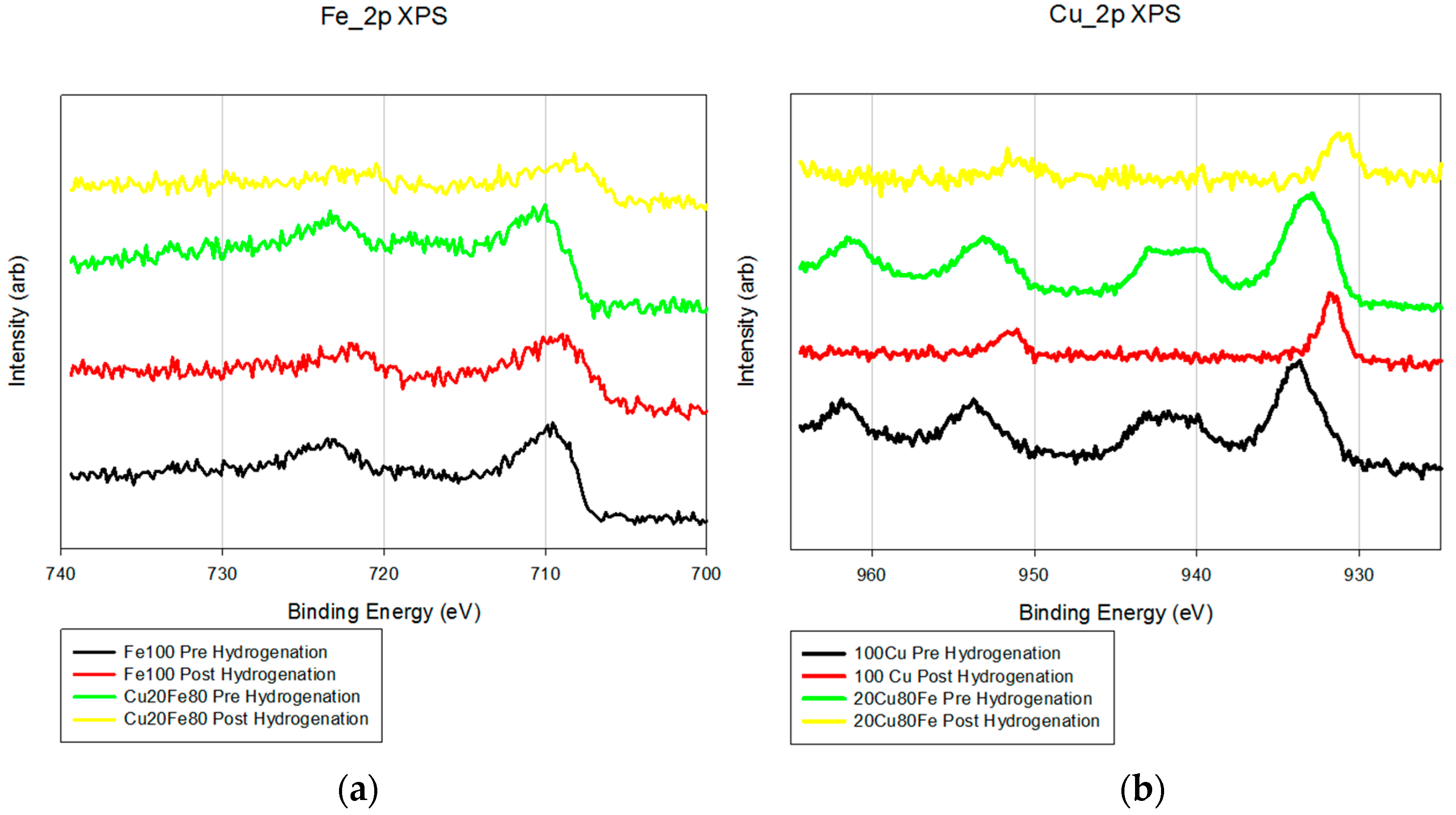
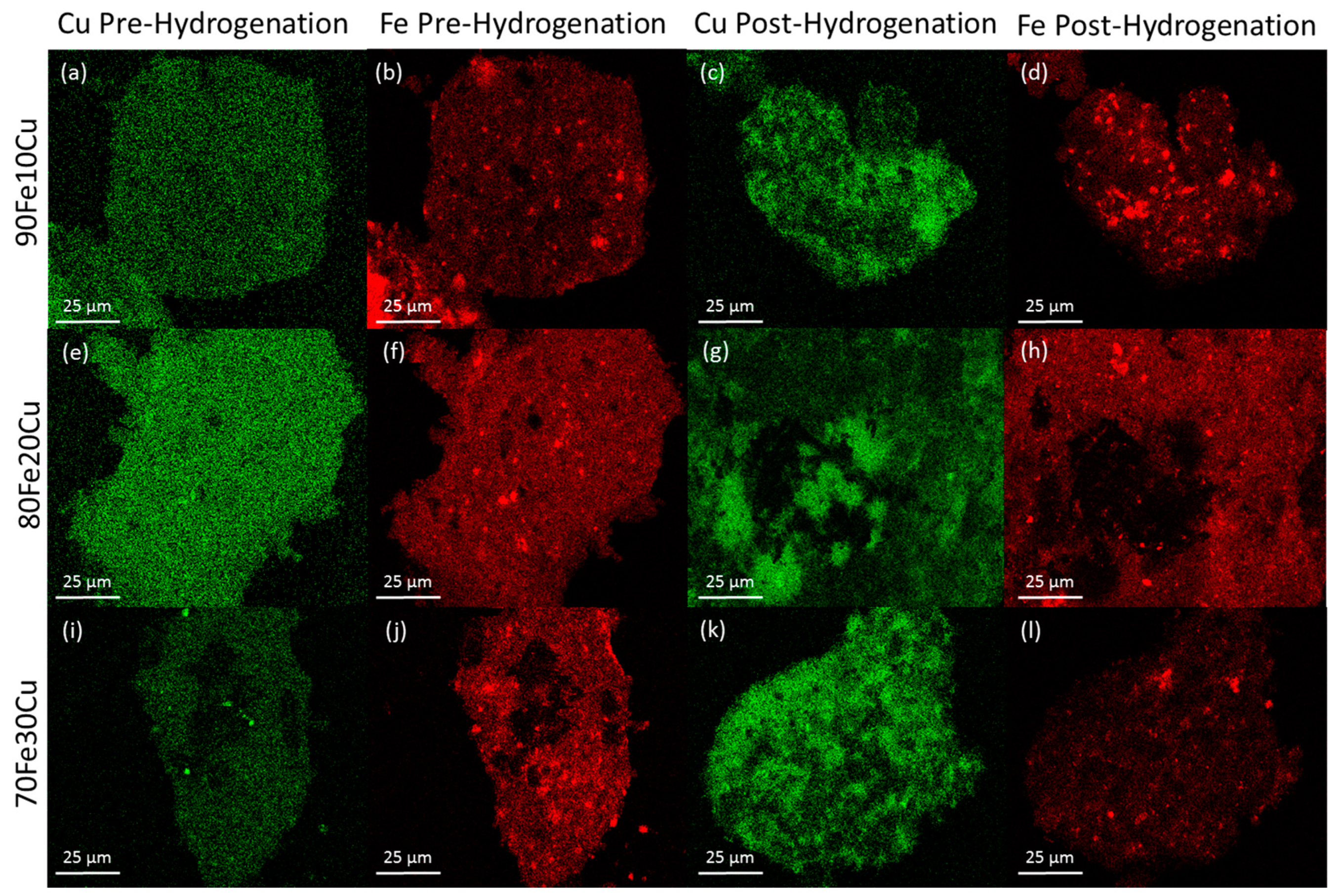
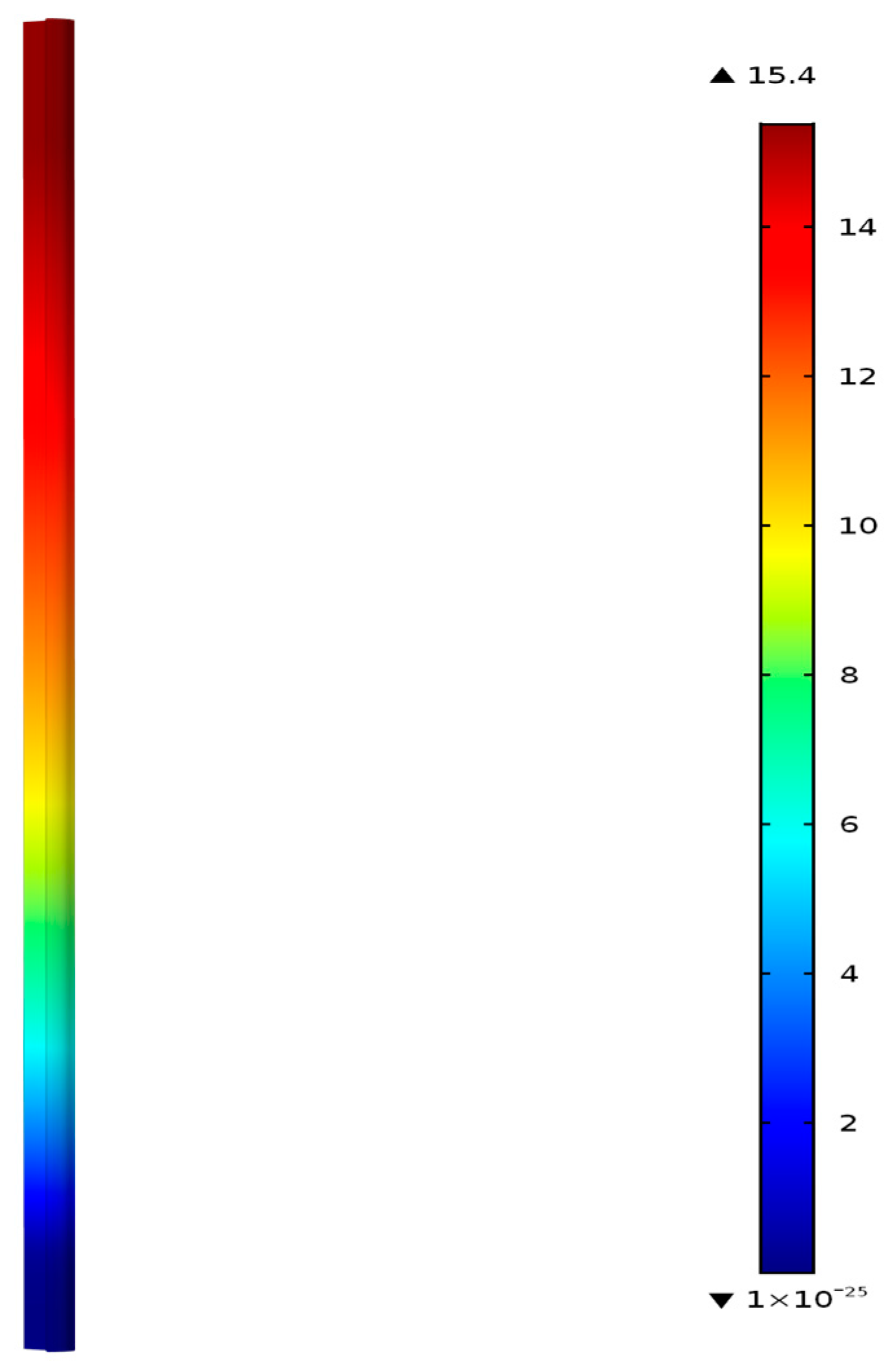


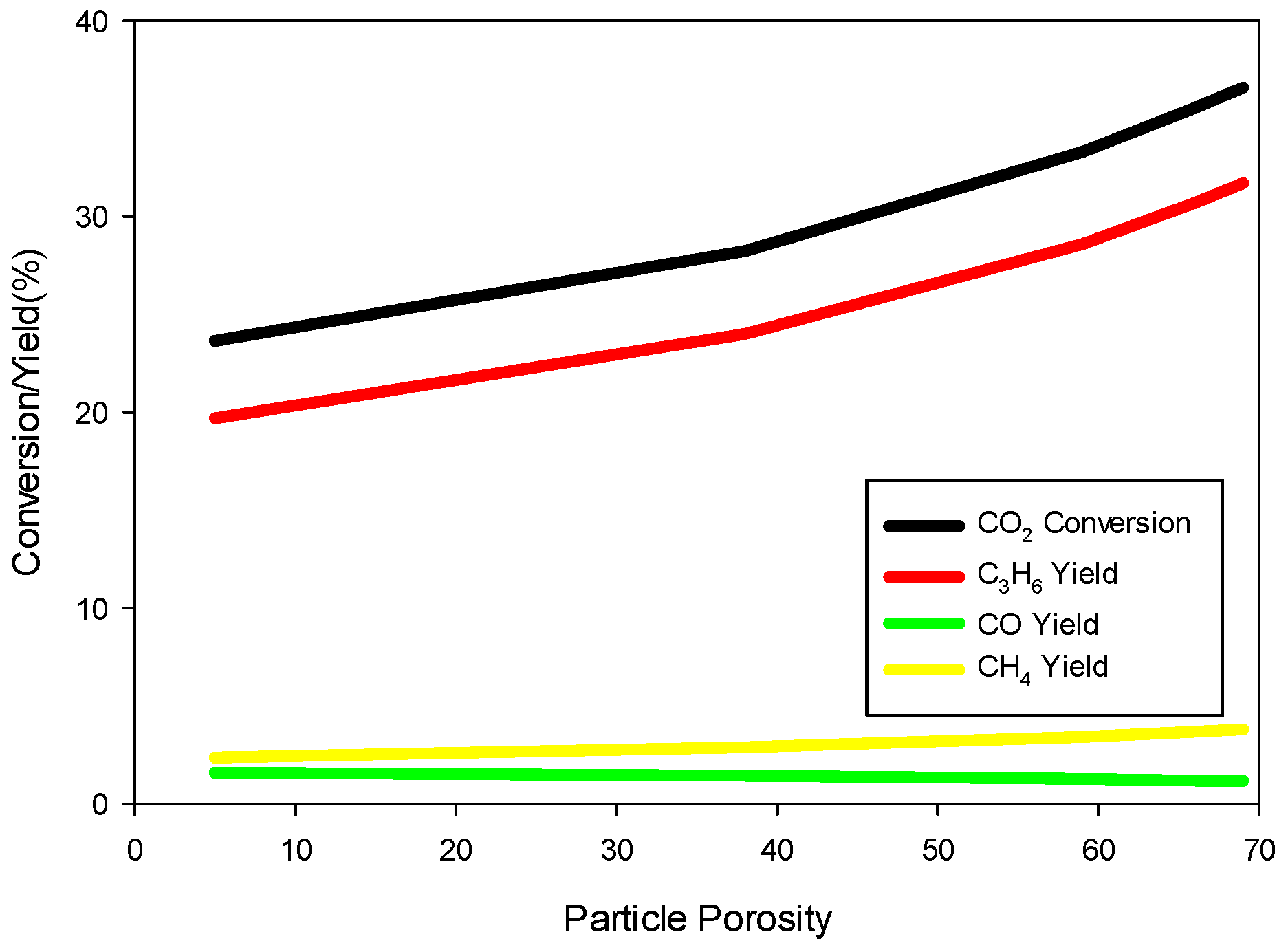
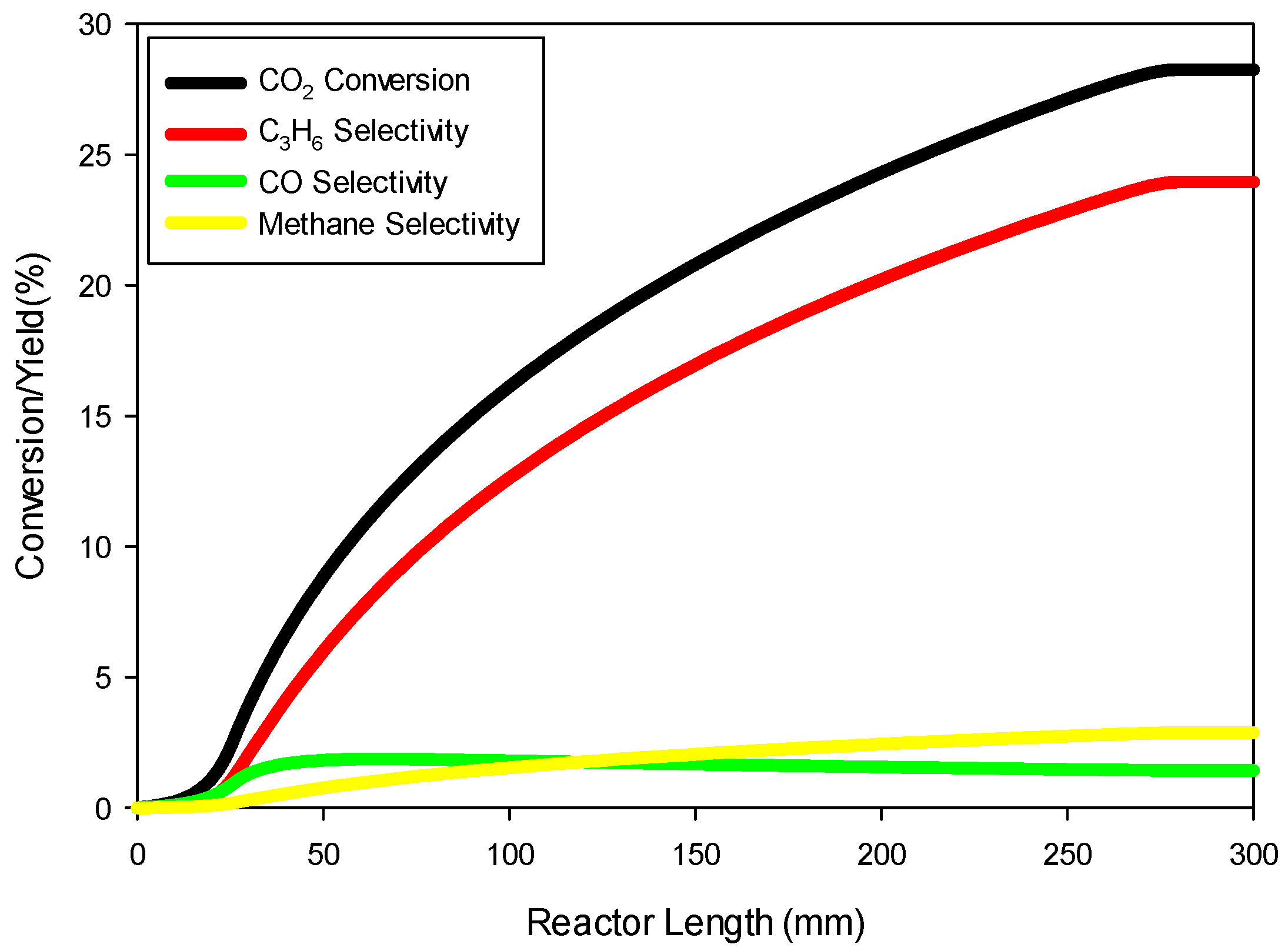
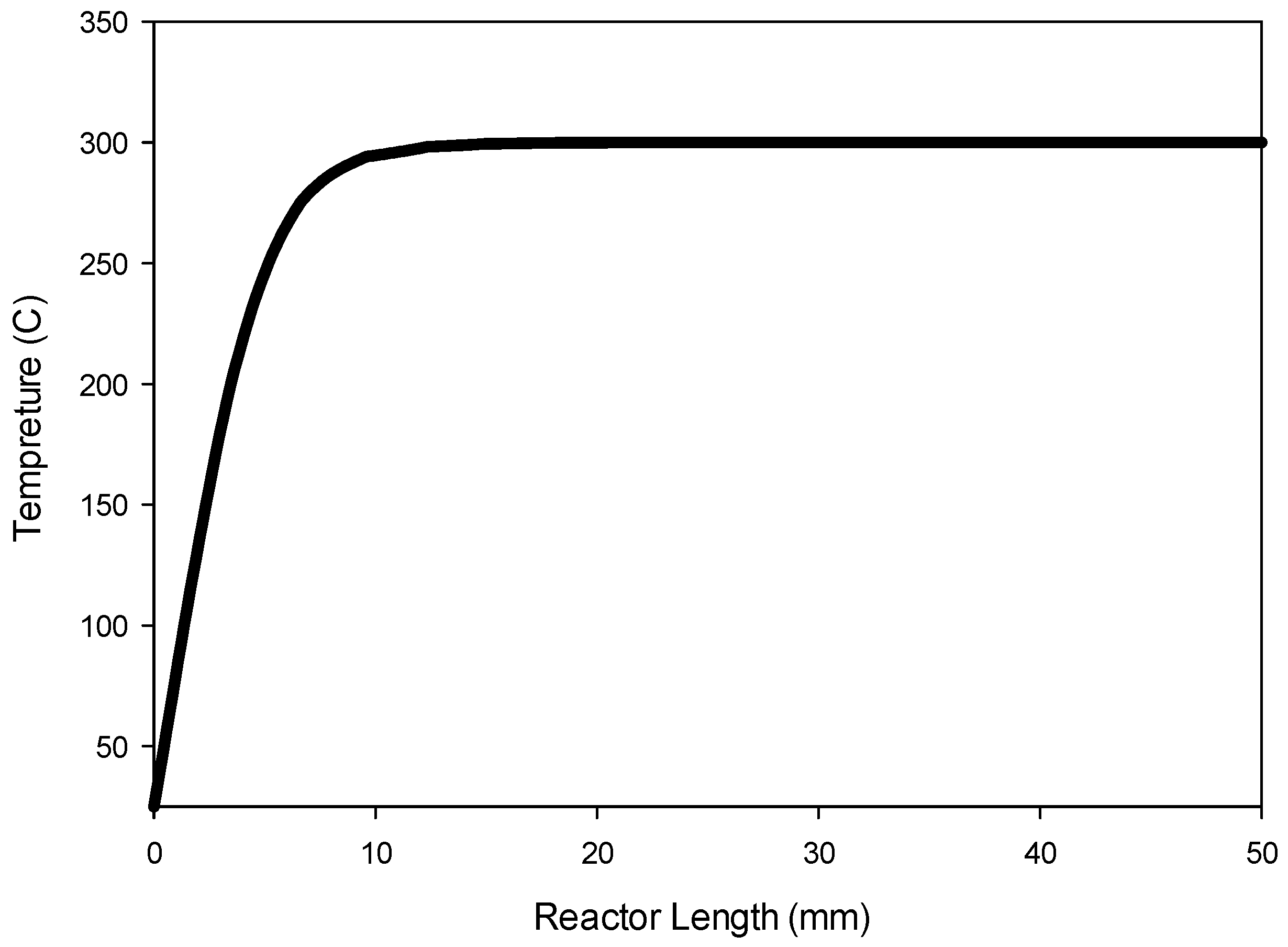

| Sample | CO2 Conversion (%) | Selectivity (%) | O/P | Alpha | Yield (%) | ||
|---|---|---|---|---|---|---|---|
| CO | Meth | C2–C5 | |||||
| 100Fe/K | 24 | 16 | 4.6 | 79 | 4.29 | 0.98 | 19 |
| 90Fe10Cu/K | 41 | 5.7 | 6.4 | 88 | 4.88 | 0.91 | 36 |
| 80Fe20Cu/K | 30 | 6.3 | 9.7 | 84 | 5.52 | 0.89 | 25 |
| 70Fe30Cu/K | 36 | 5.7 | 6.0 | 88 | 4.06 | 0.91 | 32 |
| Sample | CO2 Conversion (%) | Selectivity (%) | O/P | Alpha | Yield (%) | ||
|---|---|---|---|---|---|---|---|
| CO | Meth | C2–C5 | |||||
| Fe80Cu20/K | 30 | 6 | 10 | 84 | 5.5 | 0.89 | 25 |
| Fe80Cu20/noK | 17 | 35 | 11 | 54 | 0 | 0.69 | 9.3 |
| Sample | CO2 Conversion (%) | Selectivity (%) | O/P | Alpha | Yield (%) | ||
|---|---|---|---|---|---|---|---|
| CO | Meth | C2–C5 | |||||
| 90Fe10Cu/K | 38 | 9.0 | 4.8 | 86 | 4.5 | 0.95 | 32 |
| Physical mixture | 18 | 2.8 | 15 | 82 | 0 | 0.75 | 15 |
| Layered sample | 37 | 8.1 | 6.6 | 85 | 6.0 | 0.86 | 35 |
| Sample | Temperature (°C) | CO2 Conversion (%) | Selectivity (%) | O/P | Alpha | Yield (%) | ||
|---|---|---|---|---|---|---|---|---|
| CO | Meth | C2–C5 | ||||||
| 80Fe20Cu/K | 250 | 12 | 0 | 11 | 89 | 1.9 | 0.82 | 10 |
| 300 | 30 | 6.3 | 9.7 | 84 | 5.5 | 0.89 | 25 | |
| 340 | 41 | 8.8 | 7.9 | 83 | 4.5 | 0.88 | 34 | |
| Kinetic Parameter | CO2 Shift (SH) | FT | FTs, Methanation |
|---|---|---|---|
| ai, H2O | 65 Ref. [31] | 33 Ref. [31] | 33 Ref. [31] |
| bi, CO2 | 7.4 Ref. [31] | 2.7 Ref. [31] | 2.7 Ref. [31] |
| ki,0, mol/(s·g·MPa) | 10 Ref. [10] | 6.45 × 103 | 7.74 × 102 |
| Keq0 | 1 Ref. [31] | N/A | N/A |
| EA,i, kJ/mol | 55 Ref. [31] | 72 Ref. [31] | 72 Ref. [31] |
| Sample | ki,0, mol/(s·g·MPa) (FT) | ki,0, mol/(s·g·MPa) (CH4) | EA,i, kJ/mol (FT) |
|---|---|---|---|
| 100Fe/K Ref. [10] | 1.29 × 103 | 5.16 × 102 | 72 |
| 80Fe20Cu/K | 6.45 × 103 | 7.74 × 102 | 72 |
© 2017 by the authors. Licensee MDPI, Basel, Switzerland. This article is an open access article distributed under the terms and conditions of the Creative Commons Attribution (CC BY) license (http://creativecommons.org/licenses/by/4.0/).
Share and Cite
Bradley, M.J.; Ananth, R.; Willauer, H.D.; Baldwin, J.W.; Hardy, D.R.; Williams, F.W. The Effect of Copper Addition on the Activity and Stability of Iron-Based CO2 Hydrogenation Catalysts. Molecules 2017, 22, 1579. https://doi.org/10.3390/molecules22091579
Bradley MJ, Ananth R, Willauer HD, Baldwin JW, Hardy DR, Williams FW. The Effect of Copper Addition on the Activity and Stability of Iron-Based CO2 Hydrogenation Catalysts. Molecules. 2017; 22(9):1579. https://doi.org/10.3390/molecules22091579
Chicago/Turabian StyleBradley, Matthew J., Ramagopal Ananth, Heather D. Willauer, Jeffrey W. Baldwin, Dennis R. Hardy, and Frederick W. Williams. 2017. "The Effect of Copper Addition on the Activity and Stability of Iron-Based CO2 Hydrogenation Catalysts" Molecules 22, no. 9: 1579. https://doi.org/10.3390/molecules22091579
APA StyleBradley, M. J., Ananth, R., Willauer, H. D., Baldwin, J. W., Hardy, D. R., & Williams, F. W. (2017). The Effect of Copper Addition on the Activity and Stability of Iron-Based CO2 Hydrogenation Catalysts. Molecules, 22(9), 1579. https://doi.org/10.3390/molecules22091579





